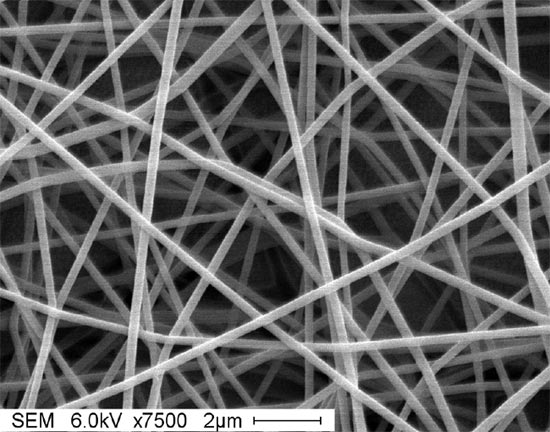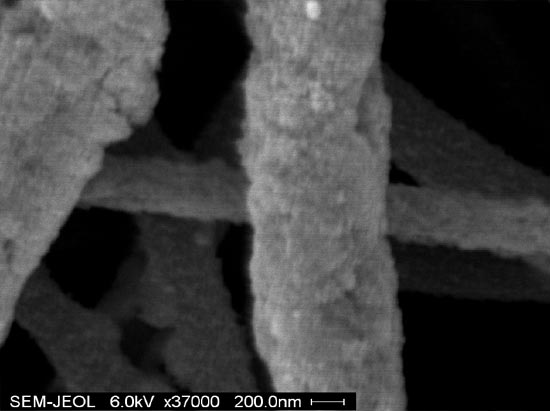Nanoscale Material Development
Research in my laboratory focuses on the development of drug delivery systems to address limitations in existing techniques. For instance, one persistent problem in drug delivery impacts the lives of diabetic patients. Insulin and glucose levels vary during the day as the patient consumes food and the body processes them. Diabetic patients inject insulin to compensate for the lack of this important compound, but insulin levels vary widely during this process with existing systems. However, over the past decade, great progress has been made in developing new sustained and controlled drug delivery systems utilizing nanoscale materials. Compared with traditional oral/needle delivery, sustained and controlled release mechanism offers higher effectiveness due to the balanced mode of delivery, lower toxicity and improved patient convenience. Ultrathin electrospun polyelectrolyte fibers obtained from poly(acrylic acid) (PAA) and poly(allylamine hydrochloride) (PAH) provide a versatile vehicle for controlled drug delivery. Since PAA and PAH are weak polyelectrolyte, the releasing can be controlled by pH of the environment. Additionally, by functionalizing the fibers with stimuli-sensitive polymer and nanoparticles, the release of drugs can be controlled by temperature, light and magnetic/electrical field. The right image below shows the fibers coated with magnetic nanoparticles that can be employed in magnetic field controlled release. This line of research shows promise of addressing these persistent clinical problems.


For More Information
Dr. Lei Zhai
NanoScience Technology Center
University of Central Florida
Orlando, FL 32826